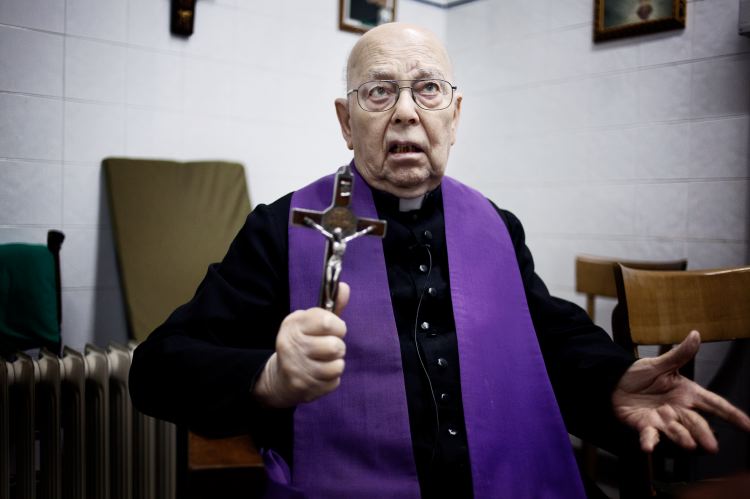Don Amorth tells us how to make the consecration to the Madonna
"Consecrating oneself to the Madonna" means welcoming her as a true mother, following John's example, because she first takes her motherhood seriously on us.
The consecration to Mary boasts a very ancient history, although it has been developing more and more in recent times.
The first to use the expression "consecration to Mary" was San Giovanni Damasceno, already in the first half of the century. VIII. And throughout the Middle Ages it was a competition of cities and towns that "offered themselves" to the Virgin, often presenting her with the keys of the city in suggestive ceremonies. But it is in the century. XVII that the great national consecrations began: France in 1638, Portugal in 1644, Austria in 1647, Poland in 1656 ... [Italy arrives late, in 1959, also because it had not yet reached unity at the time of national consecrations].
But it is especially after the Apparitions of Fatima that consecrations multiply more and more: we remember the consecration of the world, pronounced by Pius XII in 1942, followed in 1952 by that of the Russian peoples, always by the same Pontiff.
Many others followed, especially at the time of the Peregrinatio Mariae, which almost always ended with the consecration to the Madonna.
John Paul II, on March 25, 1984, renews the consecration of the world to the Immaculate Heart of Mary, in union with all the Bishops of the orbe who had pronounced the same words of consecration the previous day in their Dioceses: the formula chosen began with the expression of the most ancient Marian prayer: "Under your protection we run away ...", which is a collective form of entrustment to the Virgin by the people of believers.
The strong sense of consecration
Consecration is a complex act which differs in various cases: it is other when a believer consecrates himself personally, taking on specific commitments, another is when he consecrates a people, an entire nation or even humanity.
The individual consecration is theologically well explained by San Luigi Maria Grignion de Montfort, of which the Pope, with his motto of the "Totus tuus" [taken from Montfort himself, who in turn had taken it from San Bonaventura], is the first 'template'.
The Saint of Montfort thus underlines two reasons that push us to do it:
1) The first reason is offered to us by the example of the Father, who gave us Jesus through Mary, entrusting him to her. It follows that consecration is recognizing that the divine motherhood of the Virgin, following the example of the choice of the Father, is the first reason for consecration.
2) The second reason is that of the example of Jesus himself, incarnate Wisdom. He entrusted himself to Mary not only to have the life of the body from her, but to be "educated" by her, growing "in age, wisdom and grace".
"Consecrate ourselves to Our Lady" means, in essence, to welcome her as a true mother in our life, following the example of John, because she first takes her motherhood seriously on us: she treats us as children, loves us as children, it provides everything as children.
On the other hand, welcoming Mary as mother means welcoming the Church as mother [because Mary is Mother of the Church]; and it also means welcoming our brothers in humanity [because all equally children of the common Mother of Humanity].
The strong sense of consecration to Mary lies precisely in the fact that with the Madonna we want to establish a true relationship of children with the mother: because a mother is part of us, of our life, and we are not looking for her only when we feel the need because there is something to ask ...
Since, then, consecration is an act of its own which is not an end in itself, but a commitment that must be lived day by day, we learn - under the advice of Montfort - to take even the first step that it entails: do everything with Maria. Our spiritual life will certainly gain from it.
